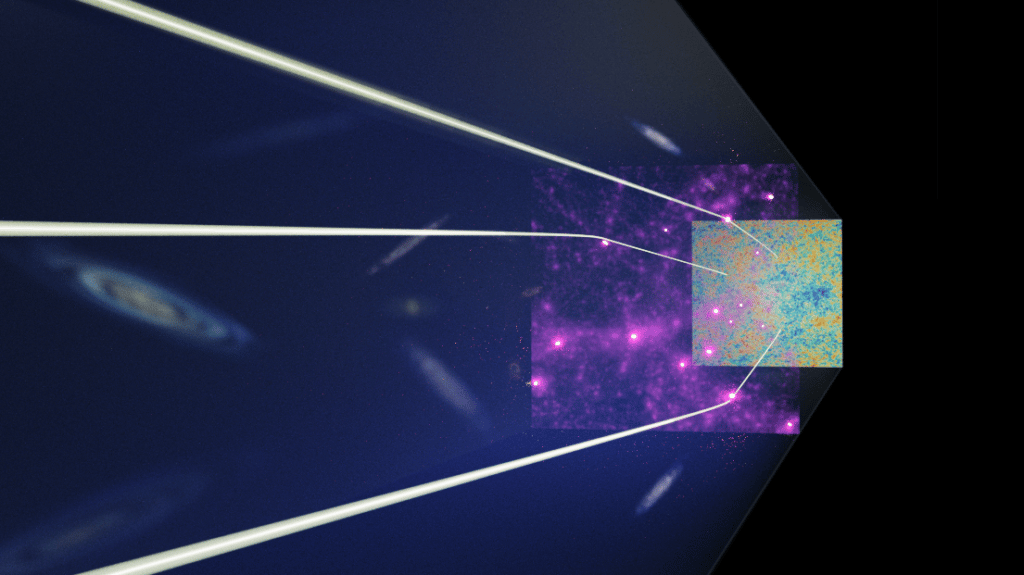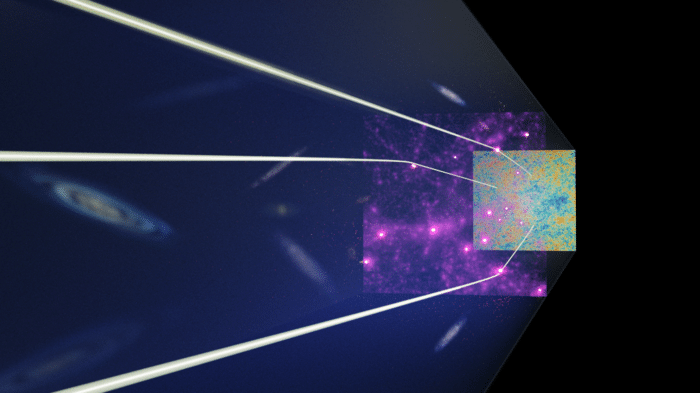Astronomers have been able to peer further back in time than ever before. An international team of scientists detected dark matter around galaxies from 12 billion years ago.
To observe dark matter from the furthest reaches of the universe, scientists from Nagoya University, University of Tokyo, the National Astronomical Observatory of Japan and Princeton University used a different source of background light, which consisted of microwaves released from the Big Bang.
Scientists were able to identify 1.5 million lens galaxies using visible light, selected to be seen 12 billion years ago. They were able to gather this data through observations of the Subaru Hyper Suprime-Cam Survey (HSC). They then employed microwaves from the cosmic microwave background (CMB) — the radiation residue from the Big Bang — to overcome the lack of galaxy light. Scientists were able to measure how the dark matter around the lens galaxies distorted the microwaves.
“Most researchers use source galaxies to measure dark matter distribution from the present to eight billion years ago”, says Yuichi Harikane, assistant professor of the Institute for Cosmic Ray Research at the University of Tokyo, in a media release. “However, we could look further back into the past because we used the more distant CMB to measure dark matter. For the first time, we were measuring dark matter from almost the earliest moments of the universe.”
Scientists previously had issues observing the outer edges of the universe because galaxies in the deepest reaches are incredibly faint. They were only able to analyze dark matter from no more than 8 to 10 billion years ago.

A preliminary analysis revealed researchers had a large enough sample to detect the distribution of dark matter. Scientists were able to detect dark matter from 12 billion years ago after combining the large distant galaxy sample and the lensing distortions in CMB. The universe was formed some 13.7 billion years ago, so these galaxies are seen soon after they first formed.
“I was happy that we opened a new window into that era,” says Hironao Miyatake from Nagoya University. “Twelve billion years ago, things were very different. You see more galaxies that are in the process of formation than at the present; the first galaxy clusters are starting to form as well.”
“This result gives a very consistent picture of galaxies and their evolution, as well as the dark matter in and around galaxies, and how this picture evolves with time,” adds Neta Bahcall, Eugene Higgins Professor of Astronomy, professor of astrophysical sciences, and director of undergraduate studies at Princeton University.
The team is hoping they will be able to see dark matter distribution from 13 billion years ago in future studies.
The study is published in the journal Physical Review Letters.












